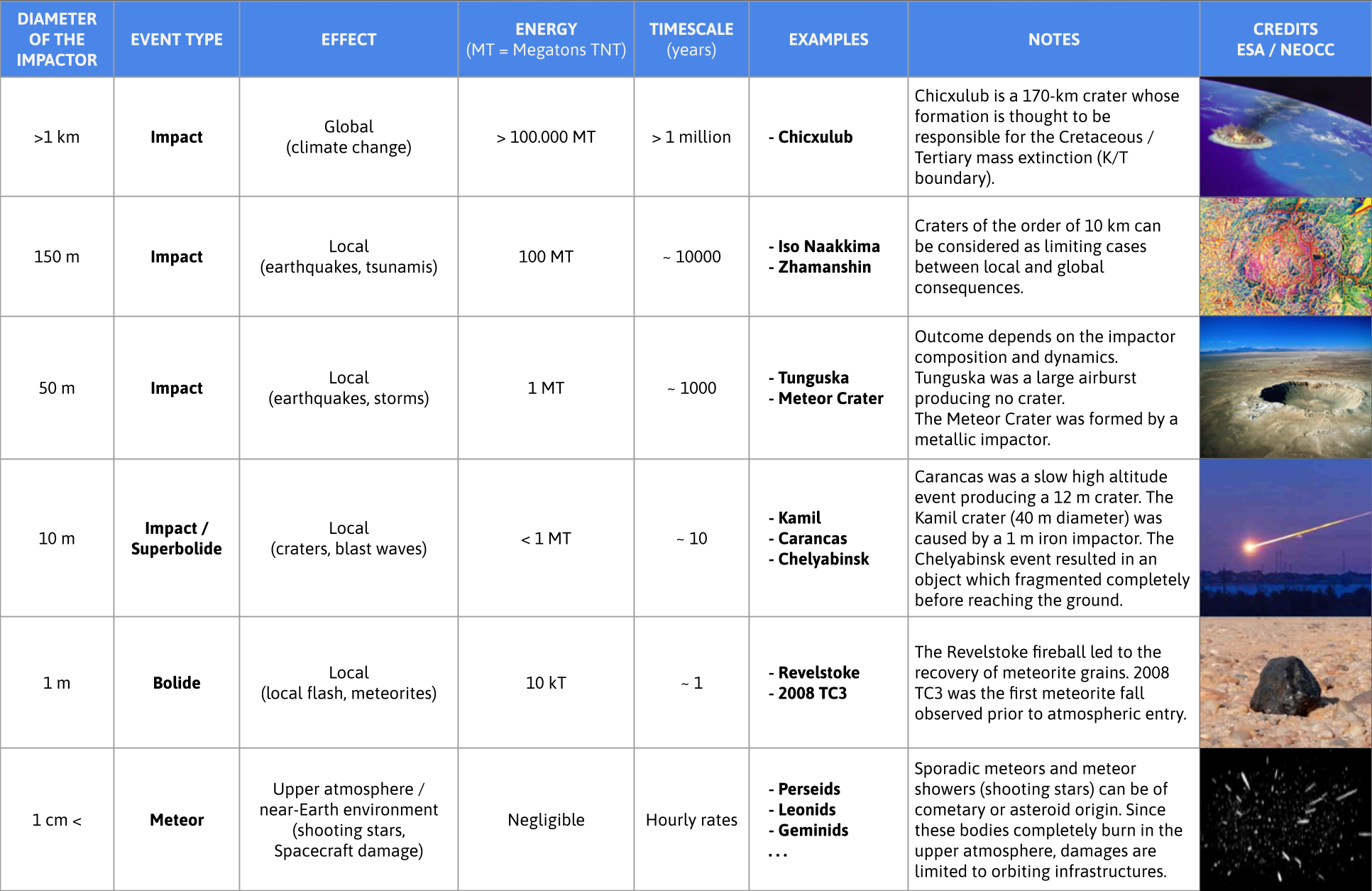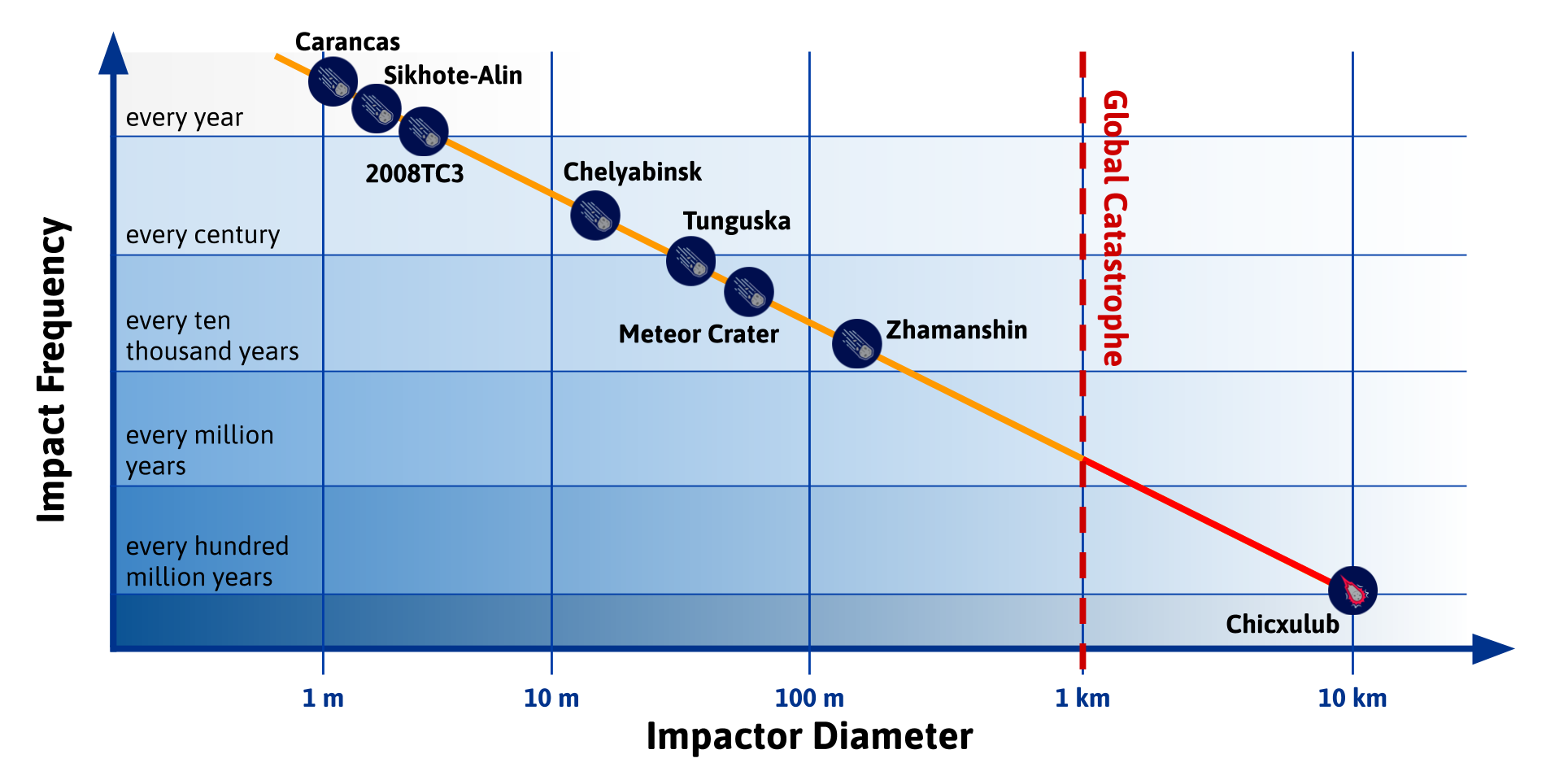Public Outreach
It is widely acknowledged that NEO science is intriguing and often goes against common sense. A clear understanding of the meaning and importance of any text concerning near-Earth objects, their interaction with our planet, and the level of hazard they may represent for mankind is therefore essential in order to avoid unjustified alarms. The services provided by the NEO Coordination Centre are addressed to scientists, journalists and the public at large willing to better understand the NEO threat. They allow to follow our activities and get access to reliable, up to date and verified information. This is an important aspect of the international efforts that are being devoted to NEO studies, especially considering that ESA's Space Safety Programme has a large spectrum of potential users and stakeholders.
The major concern about NEOs is the potential threat that they pose to life on our planet; the good news is that the timescale of the most dangerous events largely exceeds not only a human lifetime but the rise and fall of entire civilisations. Nevertheless, even the much more frequent fall of a small asteroid only capable of producing meteorites on the ground is a potentially hazardous event and must be adequately monitored. The table below summarizes our present knowledge of the impact hazard, including the frequency of occurrence of selected events and their consequences. References to recorded events are also presented.

The plot below relates the energy released by an Earth impactor to its frequency of occurrence. It shows that an impact event with energy greater than the combined world nuclear arsenals occurs on a time-scale of less than a million years. Some of the events mentioned in the table above are also reported.

The reason why NEO monitoring programmes are needed is that our knowledge of the NEO population is still incomplete. To date, more than 95% of objects with diameters larger than 1 km have been discovered, while this figure drops to only 10% when considering 100 m sized objects. The following infographic provides more information about this: https://www.esa.int/ESA_Multimedia/Images/2018/06/Asteroid_danger_explained.
NEO background information can be found at the web site of ESA’s Planetary Defence mission Hera (https://www.esa.int/Safety_Security/Hera/) which also addresses the mitigation issues, i.e. the actions that can be undertaken to reduce the damage (e.g. evacuation of a given region) or to remove the hazard completely (e.g. by deflecting an asteroid on a collision route with our planet in space).
Articles on NEO-related subjects, a glossary for the explanation of scientific terms and other educational material can be found at the Tumbling Stone on-line magazine web site http://spaceguard.iaps.inaf.it/tumblingstone/index.html
